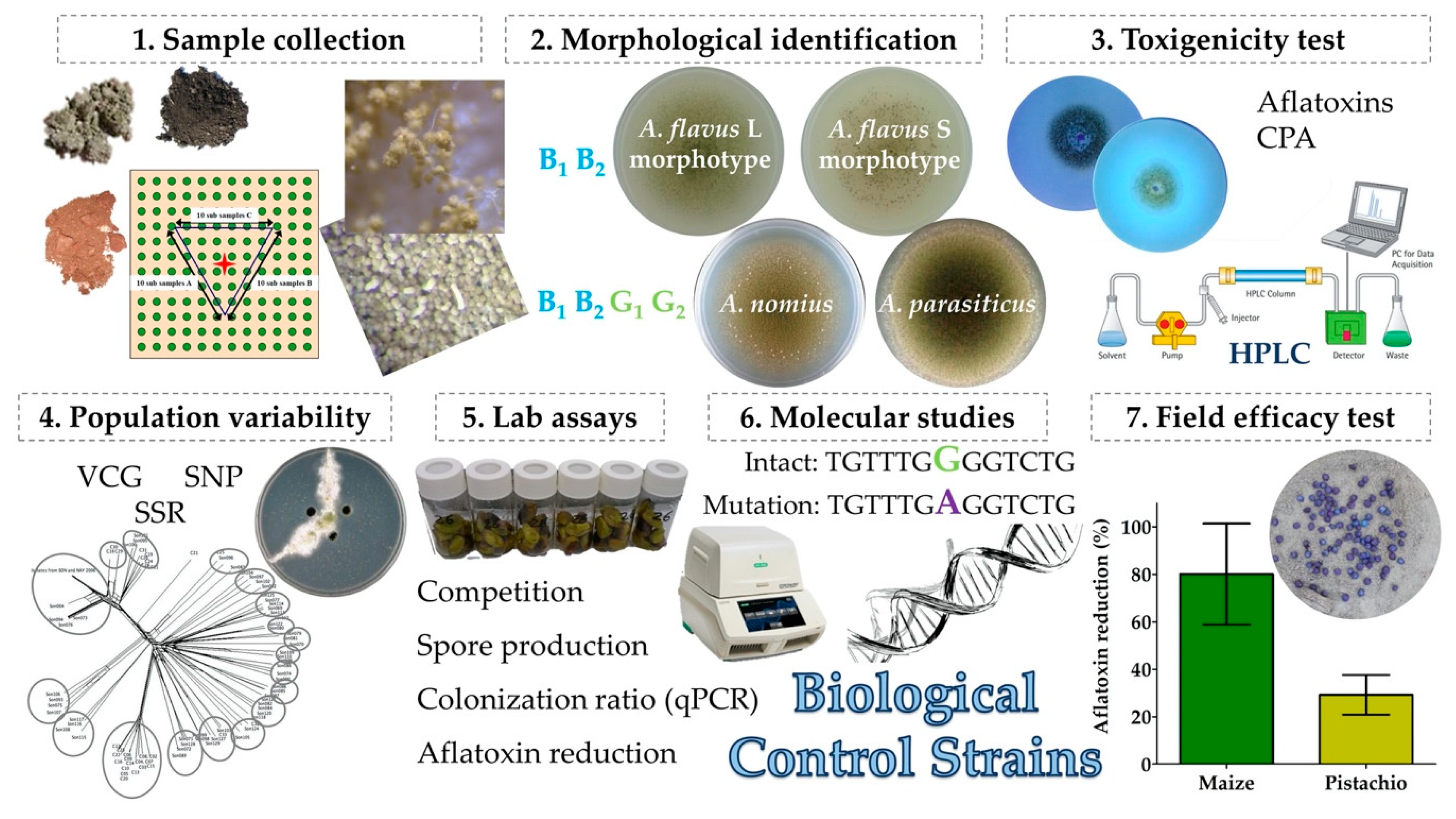

flavus will be developed to allow the global scientific community to identify genotypes reported in the literature and/or incorporated into biocontrol products under development around the world. Simple Sequence Repeat (SSR) analyses will be expanded to allow better understanding of strain distribution and divergence. Diversity among and distributions of naturally occurring atoxigenic strains of potential use in biological control products will be determined and atoxigenics will be selected and field tested for the next generation of aflatoxin prevention biocontrol products.

Area-wide influences of current commercial practices utilizing atoxigenic strain biocontrol agents will be quantified with culture and DNA based techniques.

The current project seeks to improve biological control to increase both single-season and long-term aflatoxin management to provide a context for both efficient area-wide aflatoxin management and reductions in cost of biological control programs.

flavus genome during asexual reproduction in controlled laboratory evolution studies.īiological control products, developed during previous projects, with atoxigenic strains of Aspergillus flavus as active ingredients have been successful at greatly reducing aflatoxin contamination of corn and peanut in commercial fields in the US and in thousands of farmer’s fields across Nigeria, Kenya, Senegal, Burkina Faso, Zambia, the Gambia, and Ghana. Determine the nature of clonal evolution in A. Improve understanding of development, evolution, and stability of populations of Aspergillus flavus, including phenomena occurring both within and between VCGs, in order to inform to inform optimization of long-term beneficial effects of atoxigenic strain biocontrol. flavus genotypes and relationships among strains under investigation in diverse locations.ģ. Develop an SSR database to support global efforts to delineate distributions of A. Determine utility of SSRs in tracking mechanisms and histories of divergences within A. flavus endemic in and adapted to target agroecosystems. Develop an understanding of the distribution of Aspergillus flavus genetic haplotypes and vegetative compatibility groups worldwide in order to improve selection of biological control agents. Improve access to atoxigenic strain biopesticides by assisting stakeholders to reduce costs of manufacture and distribution and expand biopesticide products while engaging USEPA in dialogue on biocontrol regulatory issues and public sector roles.Ģ. Advance biological control products based on atoxigenic strains of A. Evaluate the potential to adapt hydropriming from seed technology to use with atoxigenic strain products to increase atoxigenic strain release under low humidity. Evaluate area-wide influences where atoxigenic biopesticides are widely used and develop strategies to increase cost-savings and efficacy based on area-wide effects. Optimize and expand use of biological control of aflatoxins based on atoxigenic strains of Aspergillus flavus in order to improve access, affordability, and area-wide management. Pest Management and Biocontrol Research 2017 Annual Reportġ. Research Project: Improved Environmental and Crop Safety by Modification of the Aspergillus flavus Population Structure


 0 kommentar(er)
0 kommentar(er)
